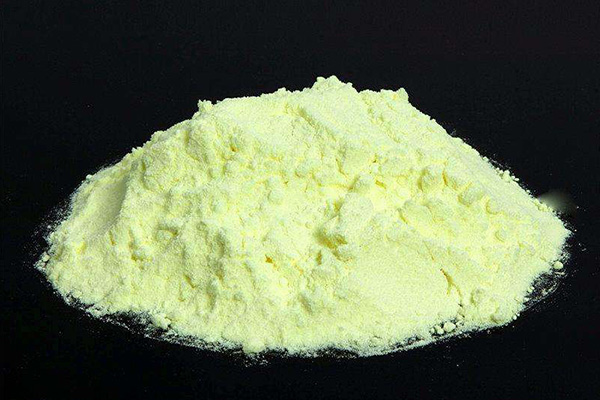Sulphur powder is processed from sulphur, due to the instability of sulphur itself. The stability of the processed sulfur product powder is also not strong. So is there any practical way to improve the stability of industrial sulfur powder during production?
First of all, we need to understand the characteristics of sulfur. There are three crystal forms of sulfur block, namely orthorhombic sulfur, monoclinic sulfur and amorphous sulfur. Among them, orthorhombic sulfur Z is stable, and common commercial products have two crystal forms. The stable sulfur at 95.6°C is sα and the melting point is 112.8°C. The stable sulfur above 95.6°C is sβ, and the melting point is 114.5°C. Both forms of sulfur exist in the form of the eight-membered ring S8, but their lattice arrangements differ. Insoluble sulfur products without effective chemical stabilization remain unstable and can even be reduced to soluble low-molecular-weight sulfur within a few days. As a metastable species, insoluble sulfur tends to return to soluble low molecular weight sulfur in the natural environment.
In the wild environment, if the sulfur is exposed to sunlight for a long time, the insoluble sulfur will be decomposed due to the combined influence of high temperature, microorganisms, ultraviolet rays and oxygen. The decomposed sulfur will be reduced to low-molecular-weight sulfur, and gradually oxidized to sulfur dioxide, which will become sulfurous acid when it encounters water. Further oxidation is converted to sulfuric acid. Even chemical stabilizer-treated insoluble sulfur can still be significantly reduced under long-term storage conditions, under the action of heat above 105 °C and close to the melting point, or under the induction of alkaline substances (especially amines).
Specific methods to improve the stability of sulfur are: the use of halogens and their derivatives can be used as insoluble sulfur stabilizers, such as iodine, bromine, ferric chloride, titanium tetrachloride, phosphorus tetrachloride, phosphorus pentachloride, tetrachloride Silicon, sulfur monochloride, sulfur dichloride and phosphorus oxychloride, as well as dilute acids, hydrogen sulfide, sulfides, hydrocarbon oils, olefins, terpenes, some Lewis acid-base systems, etc. Both ends of the halogen atom and hydrogen atom in the stabilizer are bonded with sulfur atoms to stabilize the insoluble sulfur.

